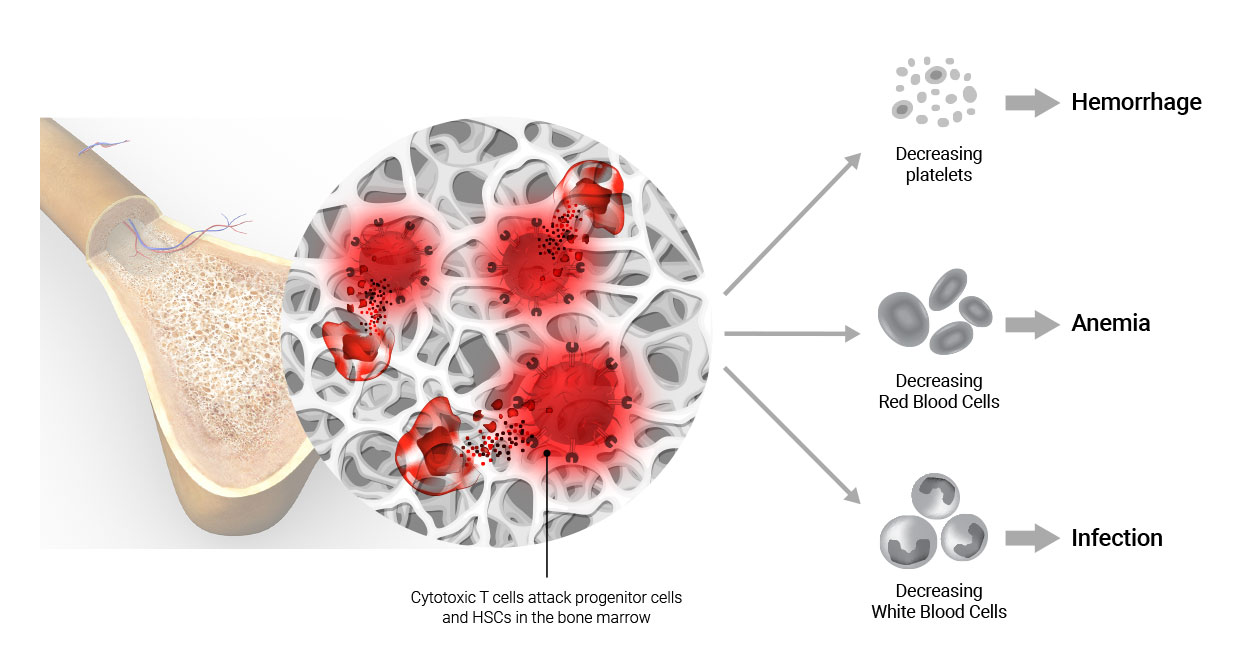Research Information

Aplastic Anemia
Aplastic Anemia is a form of bone marrow failure. It occurs when stem cells within the bone marrow do not create enough blood cells, such as red blood cells, white blood cells and platelets, due to the damages to stem cells within the bone marrow that are supposed to grow into mature blood cells. It has been reported that Asians are 5 to 10 times more susceptible to aplastic anemia compared to Caucasians as to the prevalence. While there is no clearly identified cause to the disease, one of the known origins is the damages to hematopoietic stem cells (HSCs) from the excessive immune response of cytotoxic T cells arising from immune imbalance, similar to autoimmune diseases. Such damages to hematopoietic stem cells prevent bone marrow from producing sufficient blood cells.
Primary treatments for aplastic anemia are through either immuno-suppressive drugs or hematopoietic stem cell transplants. However, 30-40% of patients tend to be unresponsive to the treatments regimen using immuno-suppressants. HSC transplant may lead to death because of severe side effects. Therefore, it is necessary to develop an effective remedy for the disease.


